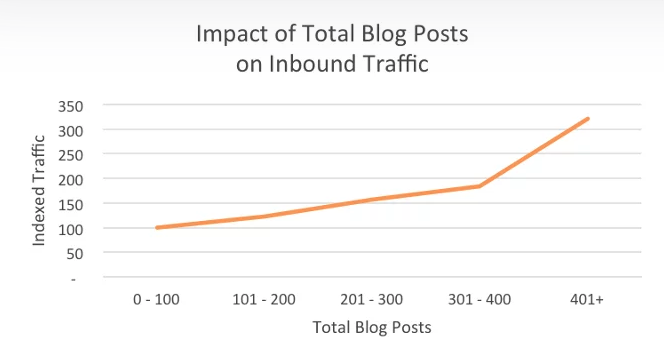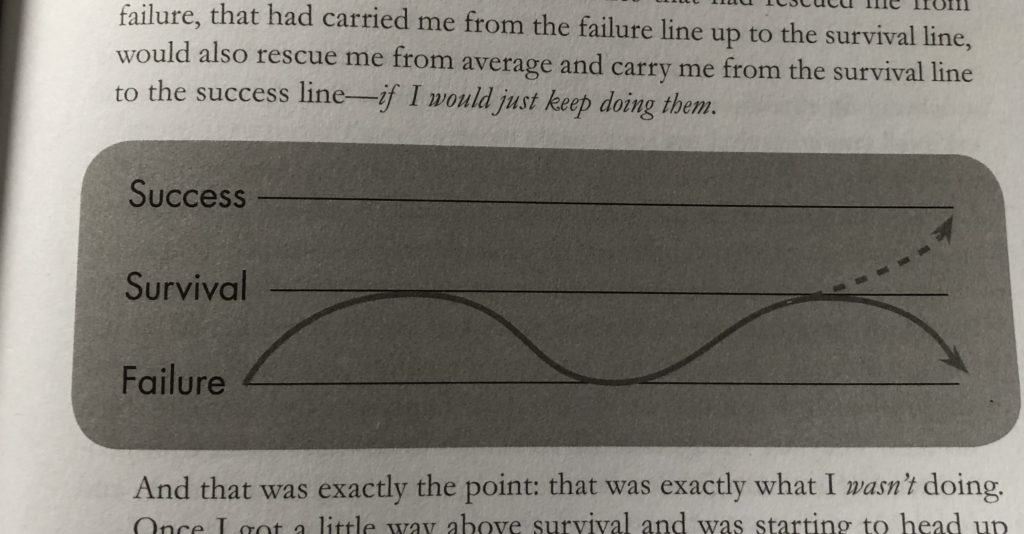The tipping point in affiliate marketing comes when you’ve put in enough work to see some regular sales coming in. Once that happens, you can focus your time more efficiently, knowing which actions brought about those results. If you’re a blogger, the tipping point might come when you’re ranking on the search engines for many of your blog posts. This means you get free traffic and this allows you to make sales without paying for advertising.
With blogging, there’s a lot of work to be done initially and you generally wont rank your blog posts quickly. But if you put enough effort in, you should see some organic traffic coming to your site.

Many affiliates will use paid marketing rather than creating content and this gives you the opportunity to scale up once you’re got a profitable campaign. When your advert generates a profit, simply add more advertising budget. Once you’re paying $100 in advertising and making profit of $200, you have a lucrative campaign. Double your budget and make $400! Multiply this budget by ten and make ten times your profit!
The Tipping Point In Affiliate Marketing
Before you get to this tipping point in affiliate marketing though, you’ll need to work pretty hard, and usually for little, or nothing! I recently heard of a top affiliate (in our community) having recorded and tested over 60 video adverts before they found a winner. I’ve personally written over 700 articles on this website alone and although sales do come in automatically now, it wasn’t always so.
Over time with a blog you pick up traffic from multiple sources. Some of your content gets indexed on Google, Bing, Yahoo etc. and you get free traffic from the SERPS – Search Engine Results Pages. But you shouldn’t rely on this. You can also promote your content on social media too and build an email list of subscribers whom you can send to your new blog posts.

This is a lot of work and it can seem futile at times, which explains why so many affiliate marketers quit. The chart above indicates total blog posts and the impact that has on inbound traffic. As you can see, this chart indicates that traffic will surge once you’re past a certain number of blog posts (400). However, this isn’t definitive because different niches will have more or less competition and the algorithms are constantly changing. But it gives you an idea of the work needed if you’re going to be a blogger!
The Tipping Point In Affiliate Marketing – Replacing Your Income
Once you have passed the tipping point in affiliate marketing, you’re in a much better place to replace your income with your affiliate marketing efforts. This can take a long time but you can dramatically speed up the process when using high ticket and subscription products. With a high ticket product, you can earn much more from a sale. Subscription products pay out recurring commissions which means the same amount of work brings in a larger income.
Using an email list is also a good idea. Without an email list, you’re relying on paid advertising or organic traffic alone. This puts you in a vulnerable position and an email list gives you greater control over your traffic. See also email marketing for affiliate marketing. Paid marketing is expensive and organic traffic hard to obtain. So you either pay or work for your traffic. But once you have an email list of subscribers you can send out messages to your list without the cost or the work!

A list gives you leverage too. Once your list tips over a certain point, you should find your messages are having a greater effect and you can sell multiple items through a single email. Most affiliates will quit before they have even built an email list to 1000 subscribers. But consider that once you pass the 10,000 subscriber mark, you should be seeing a dramatic uptick in your revenue, especially when using high ticket and recurring income products within your sales funnel.
Summary
The tipping point in affiliate marketing is when you start generating sales for work you’ve done previously. This can mean either the work done in crafting a paid advert or in building a lot of content. When you start generating sales more regularly, you’re over the main hump! Before that, affiliate marketing can be a frustrating experience. But once you have some regular sales coming in, you can track those sales and focus on the actions which generated them. Before that happens you don’t have the data to show what works and what doesn’t; so a lot of what you do is “experimental”.
Once you’ve proved an advert, or created enough content to generate traction organically, you’re in a great position! For me, regular sales from blogging proved that blogging worked. This motivated me to do more! Whereas before, I was more uncertain of whether what I did made any difference at all! This uncertainty fuels procrastination and self doubt and seldom leads to positive action. But once you have more certainty, you can move forwards with more self assurance and in the right direction given the data you now have.